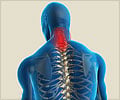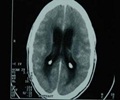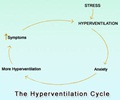The day is not far when patients with breathing problems due to nerve damage could be treated with just a flash of light on the spinal cord, and that too without the need of repeated
A group of researchers have strived long and hard, and the result- patients with breathing problems due to nerve damage can soon be treated with just a flash of light on the spinal cord. And repeated surgery will become unnecessary too!
In a study, scientists observed rats with breathing problems caused by damage to their nerves have had normal breathing restored by bursts of visible light aimed onto the spinal cord.The breakthrough may pave the way for miniature implants that would shine light on damaged nerves, and might one day allow people with similar injuries to breathe normally.
In a study in 2005, Ed Boyden at the Massachusetts Institute of Technology infected neurons in Petri dishes with viruses carrying the ChR2 gene, which codes for a light-sensitive protein called channelrhodopsin-2.
The researchers found that the neurons started expressing the protein, which made them use pulses of light to control when the neurons fired.
"The nerve cells think they are photoreceptors," New Scientist quoted neuroscientist Jerry Silver at Case Western Reserve University in Cleveland, Ohio, as saying.
In the current study, Silver is aiming to find out how this light-operated neuronal switch might be used to restore function lost as a result of nerve damage.
Thus, messages from the brain could be prevented getting to the diaphragm, leaving the animals with problems breathing. Similar injuries are the leading cause of death in people with spinal cord damage.
They observed some activity in the neurons, and consequently in the damaged side of the diaphragm after a 1-minute sequence of half-second pulses.
And finally, the researchers attained the breakthrough after they extended the treatment to three 5-minute cycles of 1-second light pulses followed by 5 minutes of rest.
"A bizarre seizure activity started," said Silver.
After the seizure, normal breathing was resumed, which lasted for about a day and a half. Surprisingly, the two sides of the diaphragm were working in tandem.
Boffins believe that the light-switch technique could one day be used to treat people with breathing problems resulting from nerve damage.
In fact, they can provide patients with an implant that would shine light on damaged nerves, eliminating the need for repeated surgery. A similar device might be used to relieve constriction of the bladder caused by nerve damage.
Source-ANI
TAN/M
 MEDINDIA
MEDINDIA




 Email
Email







